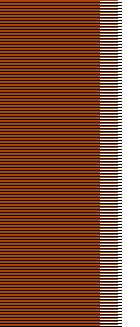

Microphones - choosing the right mic for your recording purposes
There are several types of microphones, but the two most common types are dynamic and condenser mics.
This page contains a guide for you on how to choose one or several mics to suit your specific needs, and a brief explanation of the different most common types.
What type of microphone should you choose?
This topic is huge and sometimes difficult, but here I'll try to make your choice a little easier.
First you have to find out what type of recording you are going to use it for. Vocals? Guitar? Other instruments? Or maybe you're on a budget and you would like an all-round mic that can do a decent job in all areas mentioned above?
A general rule is to use dynamic microphones for instrument miking ,preferably live guitar and drums, condenser mics for vocals or other soft recordings where you want to capture all the details (By the way, when recording drums you are likely to use a combination of both types). But there is much more to it than that.
Condenser vs. dynamic micsThe condenser mic generally has a flatter frequency response than the dynamic one. That is why you should choose a condenser mic when high accuracy and clarity of the recording is needed. For example vocals of almost any type, the acoustic guitar or any other acoustic instrument will be most accurately recorded with a condenser mic. Because of its construction the condenser mic is more sensitive to sound and also more physically fragile than a dynamic one, so it should be handled with care. Too hard handling ( a drop to the floor), too high sound pressure (screaming into it close up) can cause this type of microphone to stop functioning. IMPORTANT!! If you choose a condenser mic you will need a preamp or a mixer that will provide phantom power or "phantom feed" of usually 48 volts. This is because the condenser mic needs electricity to operate. Most of the new preamps and mixers provide this, but if you're going to use a condenser mic be sure to check just in case.
The dynamic mic is usually more rugged . It can handle more rough handling, moisture and high sound pressure levels than the condenser. This is why live performers on stage and outdoors preferably use dynamic mics. It can also be used in your recording studio, but it's not well suited for recording soft vocals or acoustic instruments since its frequency response is much narrower than the condenser's. For rough and loud vocals like heavy metal vocals though, a dynamic mic might even be the only way to go since a condenser would only distort under the high sound pressure. This type of mic does not need any phantom power.
There are a few more types of microphones, but these are the two most commonly used in recording.
Browse microphones at zZounds.com
Pick up pattern is also an essential element when choosing the right mic.
The mic legendI can't be writing about mics without mentioning the one that has been around for years and years and still going strong through all kinds of weather and sound levels.
It's perhaps the most popular dynamic mic of all time. I use this for rough vocals in my recording studio and it works great.
I'm talking about the Shure SM58 (Buy the Shure SM58 mic from zZounds.com) If you're just going to buy one mic mainly for vocals, you're on a budget, and the slightly narrower frequency response isn't all that important to you, then the Shure SM58 is highly recommended.
This has been a brief introduction to microphones and the most common types and applications. This page will be frequently added to and updated. I will write about how to record vocals and different instruments in another section of this site which is currently under construction. If you want more technical information or want to study mics further go here. Also check out my page on microphone cables. |
|||
|
All content and images, except where noted are Copyright
2004-2009 Build-a-recording-studio.com. Content and images from affiliates are copyright to their respective owners. This site is in affiliation with and is powered by
|

